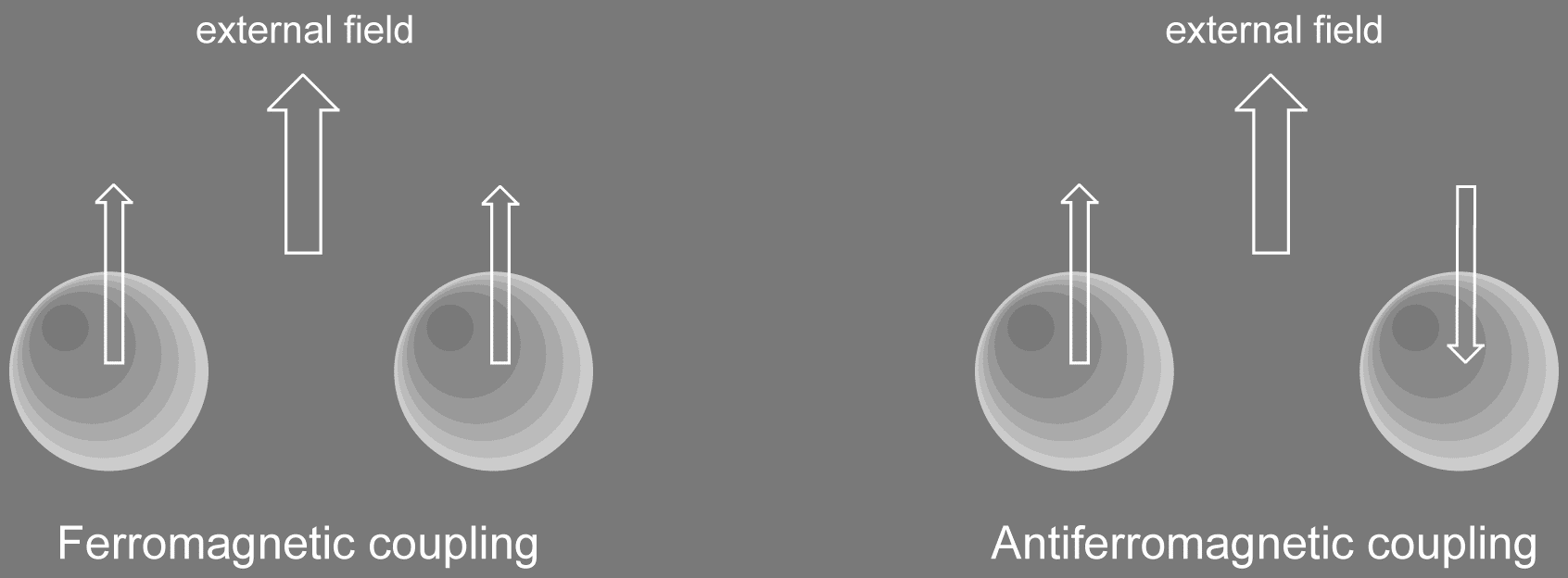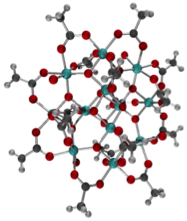Research
Return to the HOME page
An overview to my publications could be of some help if you are interested in my past!
[Accessing to publications]
From 2005 to date, the 'recent' period, my work is well characterized by its introduction into the
computational chemistry domain. Thus, currently, the main research lines I work are based on the
following topics:
1) Establishment of reaction mechanisms
2) Calculation of magnetic coupling constants
3) Synthesis of new magnetic materials
4) X-ray structural analysis
5) Complete open work lines
Collaborations
This varied research is also possible thanks to the collaboration that I have had and I have with another
research groups. Currently, I collaborate with:
· Dominique Matt - Laboratoire de Chimie Inorganique Moléculaire, Université de Strasbourg,
Strasbourg, FRANCE
· Reijo Sillanpää - Department of Chemistry, University of Jyväskylä, Jyväskylä, FINLAND
· Joan Cano - Departament de Química Inorgànica, Universitat de Barcelona - ICREA, Barcelona,
SPAIN
· José Manuel Seco - Departamento de Química Aplicada, Facultad de Ciencias de San Sebastián,
Universidad del País Vasco, San Sebastián, SPAIN
· José Rivera Utrilla - Departamento de Química Inorgánica, Facultad de Ciencias, Universidad de
Granada, Granada, SPAIN
· Jean-Pierre Costes - Laboratoire de Chimie de Coordination (CNRS), Toulouse
· Juan Manuel Cuerva - Departamento de Química Orgánica, Facultad de Ciencias, Universidad de
Granada, Granada, SPAIN
1) Establishment of reaction mechanisms
This is my main work line, in part because a lot of imagination is needed and this aspect is extremely
attractive for me. In some way, this discipline has a high resemblance with a quasi-artistic dedication.
Thus, from a few years ago, I am working in palladium migration processes, best fitted with a
organometallic chemistry domain.
There have been recent examples in organopalladium chemistry of palladium displacement reactions
along a chain of carbon atoms that are part of palladium-catalyzed multi-step transformations. These
displacement reactions between two carbon atoms, which consist of a forward 1,n Pd migration
associated to a concomitant backward shift of a hydrogen, are important from a synthetic point of view
since they allow in certain instances the attachment of groups in positions that are otherwise difficult to
substitute by usual chemical reactions. In the recent past years we have tempted to shed light on the
mechanism of such 1,n Pd/H exchange through several theoretical studies that focused on the processes
of intramolecular nature. We were in particular able to delineate the electronic and geometric factors
that account for the existence of Pd(II) and/or Pd(IV) transient species (either transition states or
intermediates). One of the conclusions reached is that very often, pathways corresponding to both
oxidation states might operate, in some instances competitively, the geometric constraints being a
determinant factor for the preference of one pathway over the other. As it is shown in the following
scheme, Pd(IV) transition states and intermediates seem to be favored by a planar arrangement of the
two organic moieties with the transferred hydrogen being an hydride sitting more or less at the apex,
whereas the Pd(II) transition state is helped by a clamping arrangement of these two organic moieties,
the hydrogen being then transferred as a proton and sitting more or less in the plane defined by
palladium and the non-organic ancillary ligands. These conclusions were found to be valid for various
kinds of Pd/H rearrangements, either between two sp2 carbon atoms or between an sp2 and an sp3 carbon
atom.

Thus, the publications derived from this work until the moment, including a chapter book, have been
the following:
i) Antonio J. Mota, Alain Dedieu Inorg. Chem. 2009, 48, 11131-11141.
ii) Alain Dedieu, Antonio J. Mota Can. J. Chem. 2009, 87, 838-849 (invited article).
iii) Alain Dedieu, Antonio J. Mota 'Application of the DFT method to the study of intramolecular palladium shifts in aryl and polyaryl
complexes'
in Computational methods in catalysis and material sciences, van
Santen, Rutger A. and Sautet, Philippe Eds., Wiley-VCH,
Weinheim, 2009, chapter 16, pp. 343-357. ISBN-10: 3-527-32032-6 ; ISBN-13: 978-3-527-32032-5.
iv) Antonio J. Mota, Alain Dedieu J. Org. Chem. 2007, 72, 9669, 9678.
v) Antonio J. Mota, Alain Dedieu Organometallics 2006, 25, 3130, 3142.
vi) Antonio J. Mota, Alain Dedieu, Christophe Bour, Jean Suffert J. Am. Chem. Soc. 2005, 72, 7171-7182.
2) Calculation of magnetic coupling constants
Molecular magnetism is one of the properties less evident among the general properties of a given
molecule. All the molecules exhibit a certain magnetic behaviour, enhanced by the presence of
unpaired electrons that confer them a singular behaviour. The atomic spatial disposition in a molecule
orient orbitals in such a manner that they could interact ferromagnetically or antiferromagnetically. It is
very difficult, for a new system, to know the expected magnetism it will exhibit. Theoretical
calculations can predict the magnetic behaviour of a given structure helping to the experimentalist to
design new systems with improved properties. This is the more valuable aspect of computational
calculations for this domain.

It should be noted that the achievement of ferromagnetic coupling through a spin polarization
mechanism. The most commonly strategies to achieve ferromagnetic coupling are: (i) the use of
orthogonal magnetic orbitals, and (ii) the spin polarization of the electronic cloud of the organic moiety
that link the metal ions. In spite of the success of the latter strategy in achieving ferromagnetic
interactions in purely organic polyradicals, it has been infrequently used in metal complexes. In the
recent years several ligands containing pi-conjugated aromatic systems have been tested for magnetic
superexchange through the spin polarization mechanism. It has been proved that the sign of the
magnetic interaction depends on the number of aromatic atoms located in between the coupled
magnetic ions. Indeed, odd numbers of atoms (as in m-phenylene linkers) lead to ferromagnetic
interactions, whereas even numbers of atoms (using, for instance, p-phenylene linkers) lead to
antiferromagnetic ones. This is because the pi-conjugated moiety exhibits an alternation of the spin sign
along the exchange pathway.
DFT calculations are currently the best non-experimental way to get reliable results for the magnetic
interaction between magnetic centers.
3) Synthesis of new magnetic materials
The synthesis of new magnetic materials is an important topic in current inorganic chemistry. This is
due to their potential technological applications (as anion sensors, for example). The synthesis of single
molecule magnets incorporating other additional properties (optical, for instance) is a field that may
offer extraordinary surprises.
Knowing more about magnetic materials:
http://www.sigmaaldrich.com/materials-science/alternative-energy-materials/magnetic-materials/tutorial/properties.html
One of the more attractive goals is the creation of new single molecule magnets. A single molecule
magnet consist in an isolated molecular species that behaves as a magnet itself. This extremely small
magnet can retain the magnetization once the magnetic field has been switched off. The first example
of this kind of spectacular structures, see figure, was the called 'Mn12': [Mn12O12(CH3CO2)16(H2O)4].

Among another applications of magnetic molecular materials, new polymeric magnetic materials as
permanent magnets and magnetosensitive gels should be mentionned. These materials are important
for the development of the technology associated to micromechanic devices.
4) X-Ray structural analysis
X-Ray structural analysis could give valuable information about the weak interactions operating in a
crystal and that keep together the molecules present in it. Sometimes, one can discover amazing cases
thanks to special packings that develop particular forces that offer curious interactions. See for example
the work:
i) Antonio J. Mota, Alain Dedieu, Pierre Kuhn, Dominique Matt, Richard Welter, Markus Neuburger Dalton Trans. 2005, 3155-3160.
Other works in this area are currently running.
5) Open work lines
a) Palladium migration processes
b) Oxo, hidroxo and amide bridges in di-iron and di-copper complexes
c) Weak interactions in crystalline structures
d) DFT calculations of magnetic coupling constants (J).
e) Ni and Pt calixarene-based catalysts
f) Ozonization of wastewaters
g) Organic reaction mechanisms
ENERGY SAVING WEB PAGE




